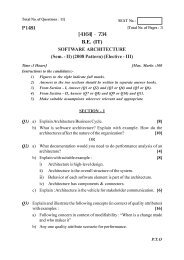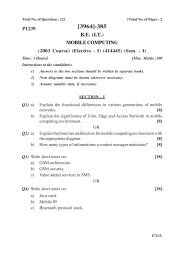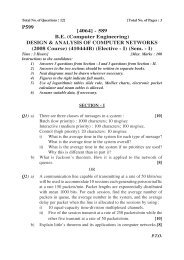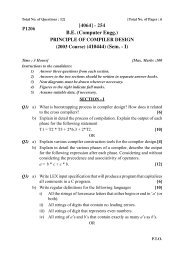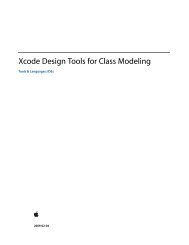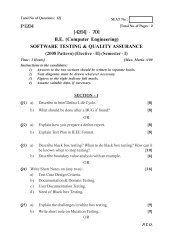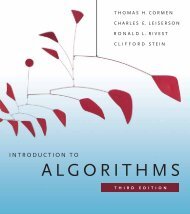Cloud Computing and SOA Convergence in Your Enterprise: A Step ...
Cloud Computing and SOA Convergence in Your Enterprise: A Step ...
Cloud Computing and SOA Convergence in Your Enterprise: A Step ...
Create successful ePaper yourself
Turn your PDF publications into a flip-book with our unique Google optimized e-Paper software.
Integration-as-a-Service 55<br />
The advantage of platform-as-a-service is that you can access a complete<br />
enterprise-class development environment at a low cost <strong>and</strong> build complete<br />
enterprise applications, from the data to the user <strong>in</strong>terface. The disadvantage<br />
is that many of the platform-as-a-service vendors leverage proprietary programm<strong>in</strong>g<br />
languages <strong>and</strong> <strong>in</strong>terfaces; thus, once your application is there, it<br />
may be difficult to move it to an on-premise server or another platform-as-aservice<br />
provider.<br />
Integration-as-a-Service<br />
Integration-as-a-service is the ability to deliver a complete <strong>in</strong>tegration stack<br />
from the cloud, <strong>in</strong>clud<strong>in</strong>g <strong>in</strong>terfac<strong>in</strong>g with applications, semantic mediation,<br />
flow control, <strong>and</strong> <strong>in</strong>tegration design. In essence, <strong>in</strong>tegration-as-a-service <strong>in</strong>cludes<br />
most of the features <strong>and</strong> functions found with<strong>in</strong> traditional EAI (enterprise<br />
application <strong>in</strong>tegration) technology but delivered as a service.<br />
Integration is a tough problem to solve, <strong>and</strong> <strong>in</strong>tegration on dem<strong>and</strong> does<br />
not make that any easier. The core notion is that you l<strong>in</strong>k up to many <strong>in</strong>formation<br />
systems, either at the data or behavior level, <strong>and</strong> abstract <strong>in</strong>formation<br />
<strong>and</strong>/or behavior from those systems to be delivered with one or many systems,<br />
either with<strong>in</strong> the same enterprise or with<strong>in</strong> companies.<br />
There are many books on <strong>in</strong>tegration, so we do not get <strong>in</strong>to it too much<br />
here. However, any <strong>in</strong>tegration eng<strong>in</strong>e, on-premise or <strong>in</strong> the cloud, has to support<br />
some basic functions, <strong>in</strong>clud<strong>in</strong>g (to name just a few):<br />
Transformation<br />
Rout<strong>in</strong>g<br />
Interface<br />
Logg<strong>in</strong>g<br />
Transformation means that you can convert the <strong>in</strong>formation semantics<br />
from one system to the <strong>in</strong>formation semantics of another system, so the target<br />
system can receive <strong>in</strong>formation <strong>in</strong> a format it underst<strong>and</strong>s.<br />
Rout<strong>in</strong>g means that <strong>in</strong>formation is routed to the correct systems on the<br />
basis of predef<strong>in</strong>ed logic (called <strong>in</strong>telligent rout<strong>in</strong>g).<br />
Interface means that you can connect <strong>in</strong>to the source or target systems<br />
us<strong>in</strong>g whatever <strong>in</strong>terface they expose.<br />
Logg<strong>in</strong>g means that you can log all <strong>in</strong>tegration activities, such as messages<br />
flow<strong>in</strong>g <strong>in</strong> <strong>and</strong> out, as well as other events.



